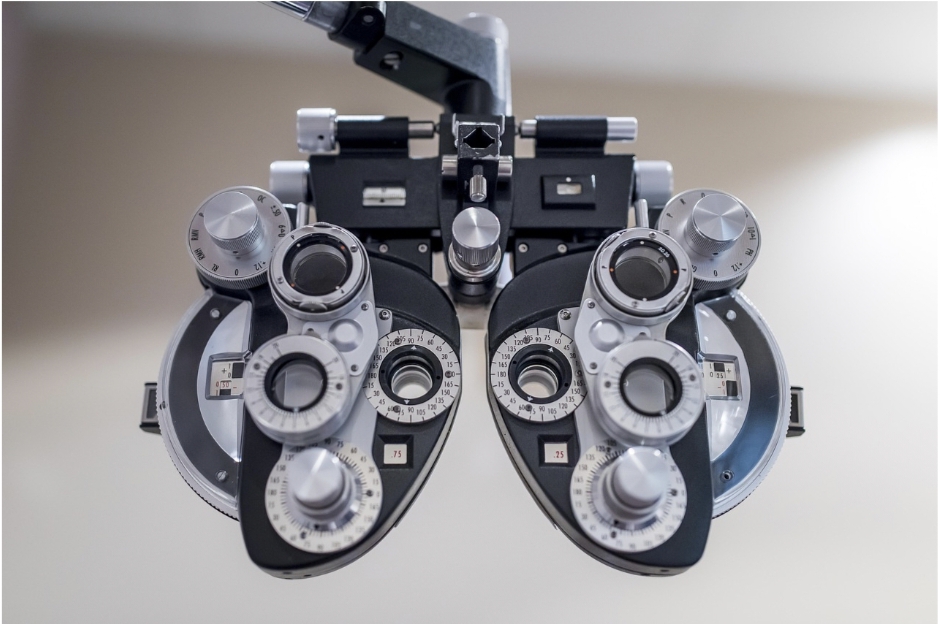Are your eyes constantly tired even though your vision is 20/20?
It’s possible you have Binocular Vision Dysfunction and don’t even know it. A study found that 36.71% of medical students suffer from some type of binocular vision disorder. That’s over one in three of highly intelligent people who do a lot of close up work and reading.
The reality is…
Just because you have 20/20 vision doesn’t mean your eyes are functioning properly. Your eyes are a team. When your eyes stop working together, a whole host of problems begin to occur. These problems can seriously affect your quality of life.
In this article, you’ll learn:
- What Binocular Vision Dysfunction is
- Common symptoms you’ve been ignoring
- Why BVD is so often misdiagnosed
- Treatments that actually work
What Is Binocular Vision Dysfunction?
Binocular Vision Dysfunction is when your eyes do not properly line up with each other.
When your eyes function properly, each one is aimed straight ahead so they produce the same image. The brain merges these images together and that’s what you see.
Simple, right?
Well, when you have BVD, your eyes are off by just a hair. Instead of straight ahead, each of your eyes are aimed ever so slightly off. This means your brain has to work hard to match two separate images it’s seeing.
Here’s the thing…
Even a very small misalignment that can’t be seen in a normal eye exam can cause big problems. Your eye muscles are overworking themselves to line up your vision. This causes a whole host of very uncomfortable symptoms.
Binocular Vision Dysfunction Treatment usually involves some sort of specialized approach because normal glasses or contacts can’t correct the problem. You have to deal with the way your eyes work together as a team, not just how clearly your right or left eye can see.
The Symptoms You’ve Been Ignoring
Want to hear something crazy?
It’s not uncommon for people with BVD to suffer for years not knowing what is going on with their vision. They visit doctor after doctor and get misdiagnosed with everything from migraines to anxiety to sinus infections.
Here are some of the most common symptoms:
- Persistent headaches (temples and forehead are the worst)
- Dizziness or feeling faint
- Double vision or blurred vision
- Eye strain and fatigue
- Difficulty reading or losing your place
- Neck and shoulder pain
- Motion sickness
- Anxiety in large spaces such as malls or grocery stores
And here’s another one…
Some people with BVD develop a slight head tilt they don’t even realize they’re doing. The head tilt is a natural compensation for the fact their vision isn’t quite lining up. It causes constant neck pain that massage or chiropractic care can never seem to fix.
Reading is an exhausting task. Words jump around the page. You end up reading the same line over and over just to comprehend what you read.
And don’t even get me started on driving. Depth perception is all kinds of messed up. Traffic lights seem to dance around. You feel like you’re rolling backwards when you stop at a light.
So annoying!
Why BVD Gets Misdiagnosed So Often
Something you might not know…
Regular eye exams only test for visual acuity. This is the clarity of your vision, what we often call 20/20 vision. They do not test to see how well your eyes work as a team.
This is where the problem lies. You can have perfect 20/20 vision and severe BVD. The misalignment is so slight that it doesn’t show up on most regular eye exams.
This is why people with BVD usually end up hearing things like:
- “Your eyes are fine.”
- “You just need glasses.”
- “You’re probably just stressed.”
- “You might have anxiety.”
But the problem is not stress or anxiety. It’s a physical issue with your eye alignment that needs a very specific type of treatment.
One study found that around 28% of medical students have some type of non-strabismic binocular vision dysfunction. These are very smart people who do demanding visual work and many of them are in the dark about what’s causing their symptoms.
What Causes Binocular Vision Dysfunction?
Binocular Vision Dysfunction can be caused by a number of factors. Some people are born with BVD while others develop it later in life.
The more common causes are:
- Facial asymmetry – One of your eyes is physically higher than the other
- Abnormal eye muscle development in the womb
- Traumatic brain injury or concussion
- Stroke or neurological disorders
- Nerve damage
For many people, BVD has been an issue since childhood. They’ve simply learned to compensate for the symptoms or assumed everyone saw the world the way they did.
Here’s something that surprised me…
Minor head injuries that may not seem like a big deal at the time can trigger BVD years later. This can be a car accident, a fall, even a sports injury. These can all cause problems with the delicate system that keeps your eyes aligned.
Treatment Options That Actually Work
Ok, now for some good news: Binocular Vision Dysfunction can be treated.
Once you have a proper diagnosis, most people start to see amazing improvements with the right treatment. The two main treatments are specialized prism lenses and vision therapy.
Specialized Prism Lenses
These are not your average glasses. Prism lenses work by bending light before it gets into your eyes. The bending of light is just enough to compensate for the misalignment. This allows your eyes to send your brain matched images and your muscles aren’t overworking themselves.
Most people experience almost immediate relief from headaches, dizziness and other symptoms once they put on their prism lenses. It’s like having a weight lifted off of their eyes.
Vision Therapy
Vision therapy is a series of eye exercises designed to help your eyes work together better. It’s like physical therapy but for your eyes.
The exercises are designed to help retrain your visual system so it can maintain alignment with less effort. The therapy is usually done under the guidance of a specialist and can take several weeks or months to complete.
But here’s the thing…
The results are amazing. People who’ve suffered from mysterious symptoms for decades finally get relief. They can read without getting exhausted. Drive without panic. Function normally in their everyday lives.
Getting the Right Diagnosis
If you think you might have BVD, don’t get your hopes up and just go for a regular eye exam.
You need to find a specialist who knows about binocular vision disorders. Look for an optometrist or ophthalmologist who specifically lists BVD or neuro-visual medicine in their list of services.
A proper BVD evaluation should include:
- A detailed history of your symptoms
- Specialized alignment testing at multiple distances
- Testing for how your eyes work together under different conditions
- Vergence and accommodation testing
The evaluation will take much longer than a regular eye exam, but it’s worth it. Getting an accurate diagnosis is the first step toward finally getting some relief.
Wrapping Things Up
Binocular Vision Dysfunction is more common than you may realize. Studies show prevalence rates over 30% in certain populations. This is nothing to sneeze at. Over 1 in 3 is pretty common.
The symptoms can be debilitating – headaches, dizziness, reading problems, anxiety. But it all boils down to one physical problem: your eyes aren’t working as a team.
The bottom line is this:
If you’ve been dealing with unexplained symptoms that you keep getting told are in your head, Binocular Vision Dysfunction might be what you’ve been looking for. The treatment options, especially prism lenses and vision therapy, have helped thousands of people get their lives back.
Don’t continue to suffer through symptoms that have a very real, treatable cause. Find an optometrist who knows about BVD and get the comprehensive testing you need.
Your eyes may be passing all your regular eye tests with flying colors. But they could still not be working together the way they should be.





